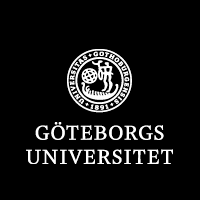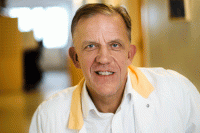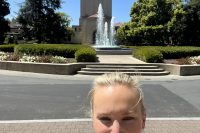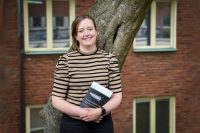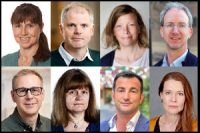NEW STUDY. Researchers at Sahlgrenska Academy continue to participate in the Global Burden of Disease project, which maps the development of health in the world. This year’s report contains several positive pieces of news but also points to other areas that have fallen behind. And for Sweden, the researchers highlight the need for better regional data.
In October, the new issue of Global Burden of Disease 2019 was published in a special edition of The Lancet (volume 396, 20201017). This expanding collaboration has now analyzed how 87 risk factors affected 369 different diseases 1990–2019 and demographic changes 1950–2019 in different countries and regions.
The Millennium Development Goals made a difference
To a large extent, the report describes a success story. Life expectancy in the world has increased and mortality has decreased, especially in children under five and in poorer countries.

“The UN’s Millennium Development Goals have been hugely beneficial, and mortality has been radically reduced in diseases related to infections, pregnancy, the neonatal period and malnutrition. Major risk factors like clean water and the indoor burning of solid fuels have decreased in importance in the last few decades, as have smoking and lead exposure,” according to Leo Stockfelt, who has taken over the work with environmental medical risk factors and Swedish register data within Global Burden of Disease (GBD).
More forceful measures needed
At the same time, several other major risk factors have grown in significance, including outdoor air pollution, drug use and metabolic diseases. The importance of non-communicable diseases is increasing globally and large investments in preventive measures and healthcare systems in many countries will be required to address these.
“It is unlikely that we will achieve the UN’s global development goals by 2030 unless forceful measures are taken soon. The fact that childbirth has decreased in many countries has certain benefits, but also leads to a declining population and, in the future, an inverted population pyramid where a smaller proportion are employed. Another major future challenge is rising temperatures and the growing poverty it is likely to lead to.”
Many contributors to the work
Several employees at Sahlgrenska Academy contribute and evaluate data and write and review articles as part of the large international collaboration Global Burden of Disease. Leo Stockfelt works with air pollution and other risk factors in the occupational and surrounding environment and with data for Sweden:
“A major success in our area is how indoor burning of fuels and its health effects, especially for women and children, have decreased in importance in recent decades, but it is still ‘low-hanging fruit’ where small economic efforts can be of great benefit to public health, especially in poor countries.”
Better data from Sweden
Leo Stockfelt also highlights the importance of continuing to improve the data base:
“No analysis is better than the data you have access to. For Sweden, it is now starting to become embarrassing that we do not have data at a more detailed level than divided by in Stockholm compared to outside Stockholm. There is data for all regions so that we could do the regional analyses that other countries do, but no one has allocated the resources to do so. This is something we must try to address in the future.”
Another important issue he highlights is continuing to include new risk factors in the analysis. Acoustician Mikael Ögren is working to produce a global exposure estimate for traffic noise for Global Burden of Disease:

“There is now strong evidence of a connection not only with sleep disorders but also with an increased risk of heart disease from high noise levels in the home. Accurately calculating noise globally is difficult, but you can use traffic data and the work done for air pollution to make a reasonably good estimate.”
Extensive research collaboration
Lars Barregård began work on environmental medical risk factors and Swedish registry data within Global Burden of Disease (GBD) ten years ago but has passed on the baton to Leo Stockfelt.
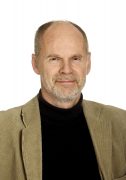
“It is the most extensive research collaboration I have participated in. Some of the GBD reports in The Lancet have more than a hundred co-authors, so you only have contact with a few of those responsible. But it is the work that has a great impact and it felt meaningful to try to contribute,” says Barregård.
Max Petzold joined the GBD effort through intensive method discussions between the World Health Organization (WHO) and the Institute for Health Metrics and Evaluation (IHME) at the University of Washington, when he was method statistician for the WHO’s project to estimate intimate partner violence.

“I remember especially when I spent well over SEK 1500 on a long phone call from Spain with IHME’s Theo Vos. The discussion then, as now, was about the methodology within GBD being very advanced and thus difficult to make completely transparent. In connection with the new start of GBD in 2010, we had many such discussions and due to these problems, the WHO and other UN organizations continue to partly produce their own global estimates,” says Petzold
But even if much of the methodology can be questioned to some extent, Max Petzold still believes that the overall benefit that the project brings in terms of evidence for policy makers clearly outweighs the disadvantages.
Facts:
The report in The Lancet is based on the Global Burden of Disease (GBD) project, which originated as a part of an initiative from the World Bank in the 1990s. Today, the Global Burden of Disease is funded by the Bill and Melinda Gates Foundation and led by the Institute for Health Metrics and Evaluation (IHME) at the University of Washington. The collaboration includes thousands of researchers around the world, some of whom work at Sahlgrenska Academy.
Title: Five insights from the Global Burden of Disease Study 2019; https://doi.org/10.1016/S0140-6736(20)31404-5
TEXT: ELIN LINDSTRÖM
